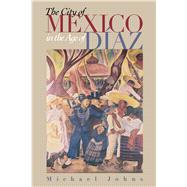The City of Mexico in the Age of Diaz
, by Johns, Michael- ISBN: 9780292740488 | 0292740484
- Cover: Paperback
- Copyright: 9/1/1997
Johns captures the pulse of a brawling city, with a sure-handed feel for both the grit and the dazzle. . . . Anybody involved in Mexico in whatever way should read this work with care, or ignore it at their peril. It is simply superb."--Karl W. Butzer, Dickson Centennial Professor of Liberal Arts, University of Texas at AustinMexico City assumed its current character around the turn of the twentieth century, during the dictatorship of Porfirio Díaz (1876-1911). In those years, wealthy Mexicans moved away from the Zócalo, the city' traditional center, to western suburbs where they sought to imitate European and American ways of life. At the same time, poorer Mexicans, many of whom were peasants, crowded into eastern suburbs that lacked such basic amenities as schools, potable water, and adequate sewerage. These slums looked and felt more like rural villages than city neighborhoods. A century--and some twenty million more inhabitants--later, Mexico City retains its divided, robust, and almost labyrinthine character.In this provocative and beautifully written book, Michael Johns proposes to fathom the character of Mexico City and, through it, the Mexican national character that shaped and was shaped by the capital city. Drawing on sources from government documents to newspapers to literary works, he looks at such things as work, taste, violence, architecture, and political power during the formative Díaz era. From this portrait of daily life in Mexico City, he shows us the qualities that "make a Mexican a Mexican" and have created a culture in which, as the Mexican saying goes, "everything changes so that everything remains the same."







